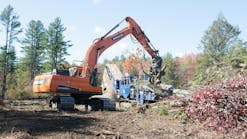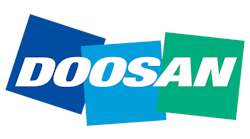Liberty Mutual Loss Prevention research has shown that there is no one safety program that is right for all contractors. Size, management style, and type of operation each plays a role in what makes an effective program for a particular contractor. We have found that the following 12 elements are significant contributors to a successful safety program.1. Management Support and DirectionTop management frequently communicates safety expectations throughout the company.Safety is given the same management attention as estimating, scheduling, and productivity.Management and supervisors are aware of accident costs.Management participates actively in safety meetings.All levels of management set the example by following the established safety rules.2. Loss-Prevention OrganizationSafety is assigned as a line management function.The presence of a safety director does not relieve line managers of their safety responsibilities.Time and money are provided for safety activities and materials.3. PreplanningAt several points prior to bidding, after the contract award, during mobilization, and before each phase of construction, the upcoming operations are reviewed so that all necessary safety controls are in place, all personal protective equipment is available, and all involved employees are instructed about how the operation can be completed safely.4. Control of Accident HazardsThe company sets standards for what is safe and appropriate employee behavior and for physical requirements to achieve acceptable job conditions.5. Employee TrainingEmployees receive ongoing safety training that includesnew-hire orientation for all employees, regardless of experience level;specific job and task safety instructions;supervisory safety training; andtoolbox safety talks.6. Accident InvestigationEstablish criteria for investigating an accident.Provide training on how to conduct an investigation.Create a management team to review investigation reports.Organize a procedure to use the investigation recommendations to change policy, procedures, or rules to prevent reoccurrence.7. Job-Site InspectionA required and scheduled program of self-inspection exists.There is a management plan to correct deficiencies noted by self-inspections, as well as inspections completed by outside agencies.8. Occupational Health and Industrial HygieneManagement ensures thatthere is a trained first-aid expert available on each job,emergency procedures and phone numbers are posted and given to each supervisor, andjobs with potential health hazards are identified and Material Safety Data Sheets are available and followed.9. Public Liability Control PlanThe companyreviews and enforces all liability requirements in contracts;exchanges hazard and safety information with the general contractor, subcontractors, and/or the owner; anddoes not expose other contractors’ employees to hazards of the operation.10. Fleet Accident Control PlanManagement ensures thateveryone driving on company business has a valid driver’s license,a clear policy on use of restraints while operating licensed vehicles and off-road equipment is followed, anda policy covering use of alcohol and other controlled substances is strictly enforced.11. Property Loss-Control PlanAll equipment is inventoried, photographed, and permanently marked.Management provides for job-site and equipment security and coordinates with local police and fire departments.Good housekeeping practices are enforced on all jobs.Adequate first aid and fire-control equipment are provided.12. Periodic AuditThere is a yearly review of losses to measure the effectiveness of the program.The program meets the requirements of any changing regulations.Courtesy of Liberty Mutual Group


